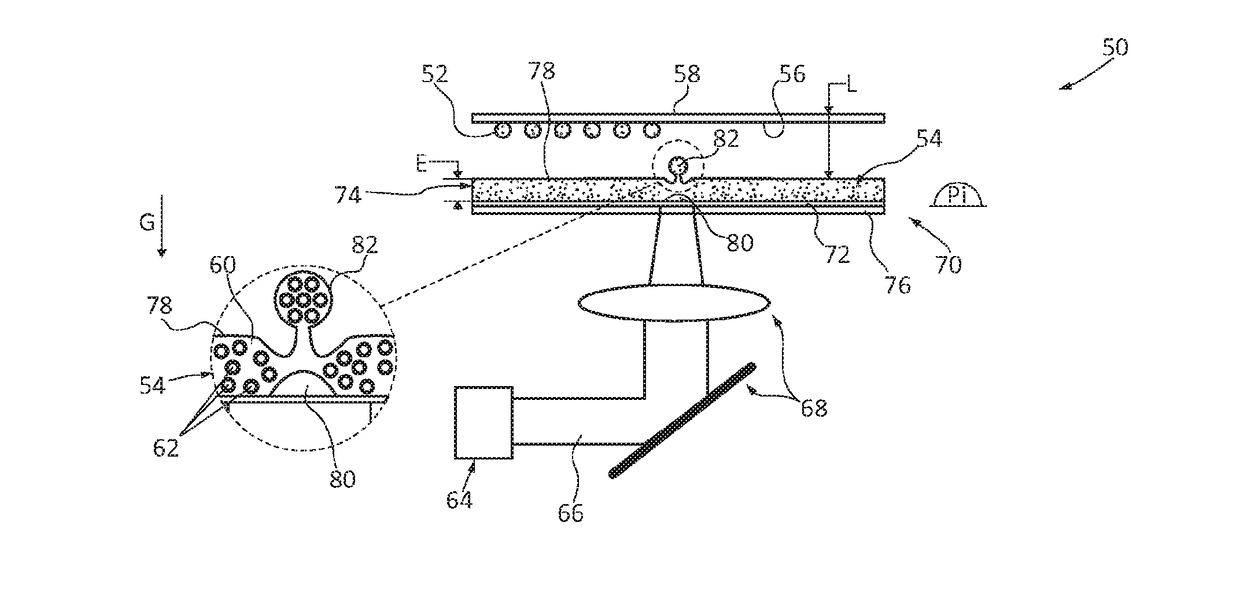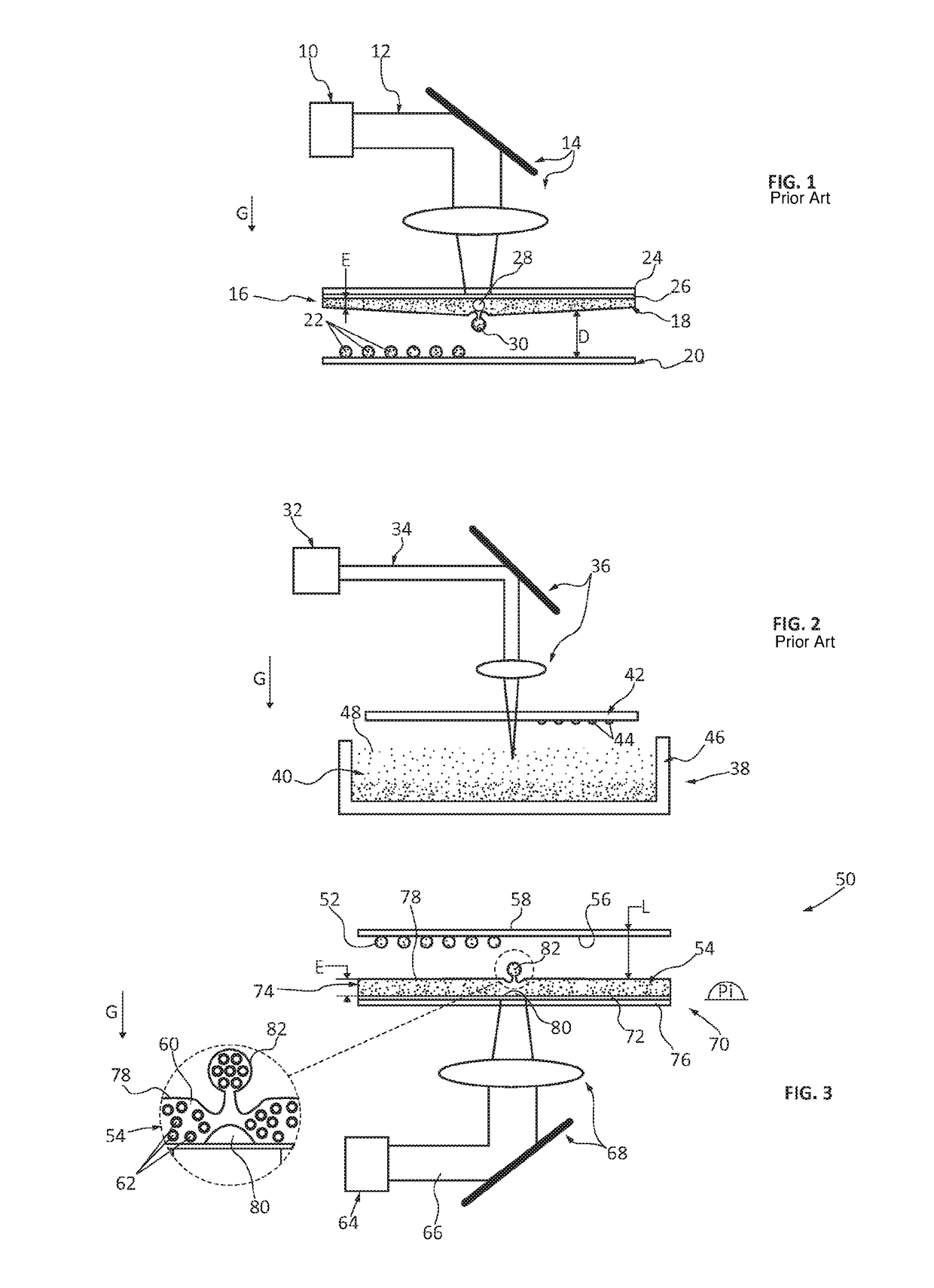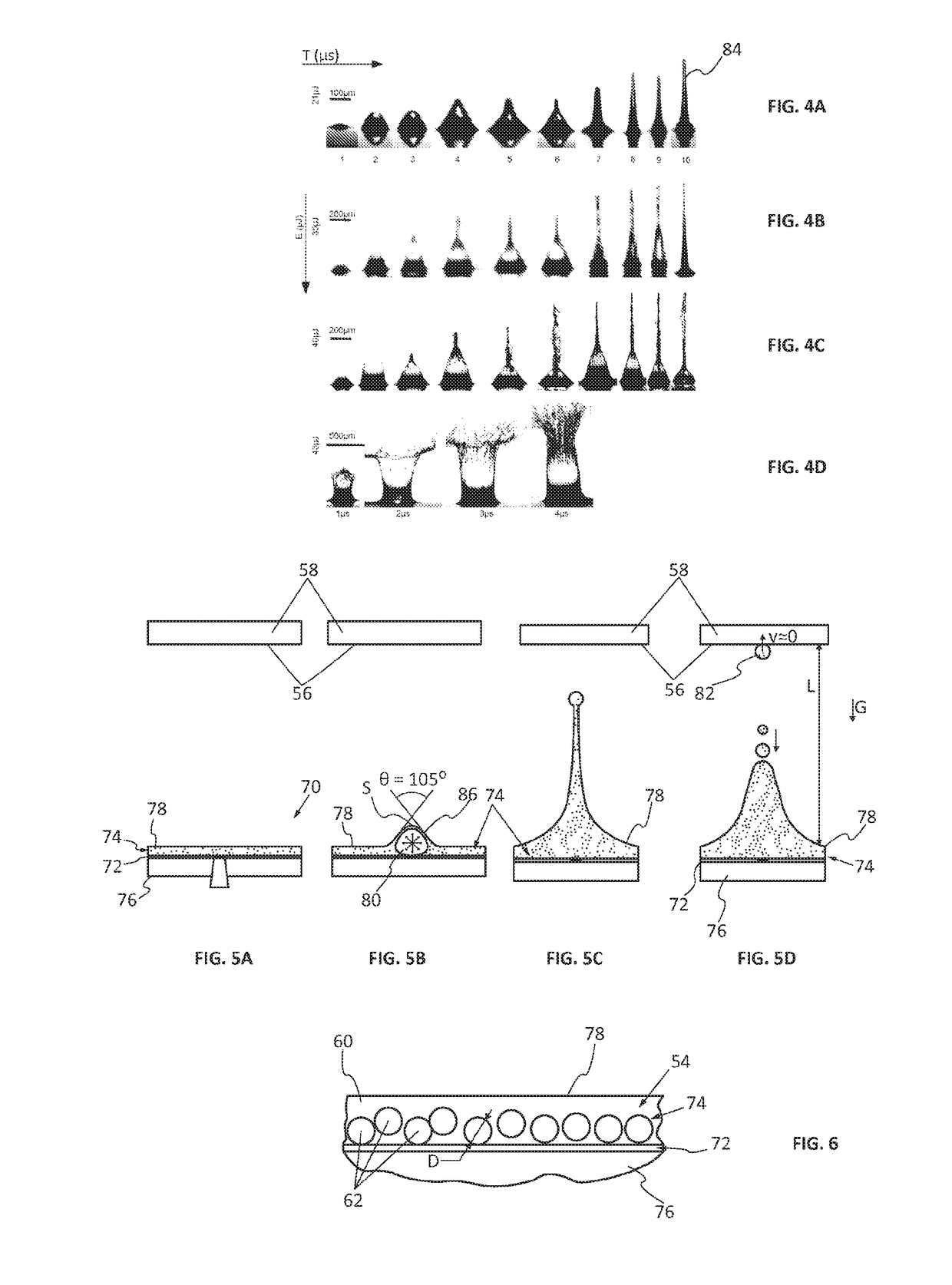Method for laser printing biological components, and device for implementing said method
a biological component and laser printing technology, applied in the direction of manufacturing tools, applying layer means, skeletal/connective tissue cells, etc., can solve the problems of difficult to deal with the complexity of tissues, limited growth of biological tissues, and unsatisfactory first procedures, etc., to achieve better resolution, less cell density, and better resolution
- Summary
- Abstract
- Description
- Claims
- Application Information
AI Technical Summary
Benefits of technology
Problems solved by technology
Method used
Image
Examples
Embodiment Construction
[0045]FIG. 3 shows a printing device 50 for producing at least one biological tissue through a layer by layer assembling according to a predefined arrangement, various components such as an extracellular matrix and various morphogens. Thus, the printing device 50 makes it possible to deposit, layer by layer, droplets 52 of at least one bio-ink 54 onto a depositing surface 56 which corresponds to the surface of a receiving substrate 58 for the first layer or for the last layer deposited on said receiving substrate 58 for the following layers. In order to simplify the representation, the depositing surface 56 corresponds to the surface of the receiving substrate 58 in FIG. 3.
[0046]According to one embodiment in FIG. 6, the bio-ink 54 comprises a matrix 60, for example an aqueous medium, wherein elements 62, for example, cells or cell aggregates, to be printed onto the depositing surface 56 can be found. As the case may be, a bio-ink 54 comprises, in the matrix 60, only one kind of ele...
PUM
| Property | Measurement | Unit |
|---|---|---|
| Thickness | aaaaa | aaaaa |
| Color | aaaaa | aaaaa |
| Size | aaaaa | aaaaa |
Abstract
Description
Claims
Application Information
 Login to View More
Login to View More - R&D
- Intellectual Property
- Life Sciences
- Materials
- Tech Scout
- Unparalleled Data Quality
- Higher Quality Content
- 60% Fewer Hallucinations
Browse by: Latest US Patents, China's latest patents, Technical Efficacy Thesaurus, Application Domain, Technology Topic, Popular Technical Reports.
© 2025 PatSnap. All rights reserved.Legal|Privacy policy|Modern Slavery Act Transparency Statement|Sitemap|About US| Contact US: help@patsnap.com



